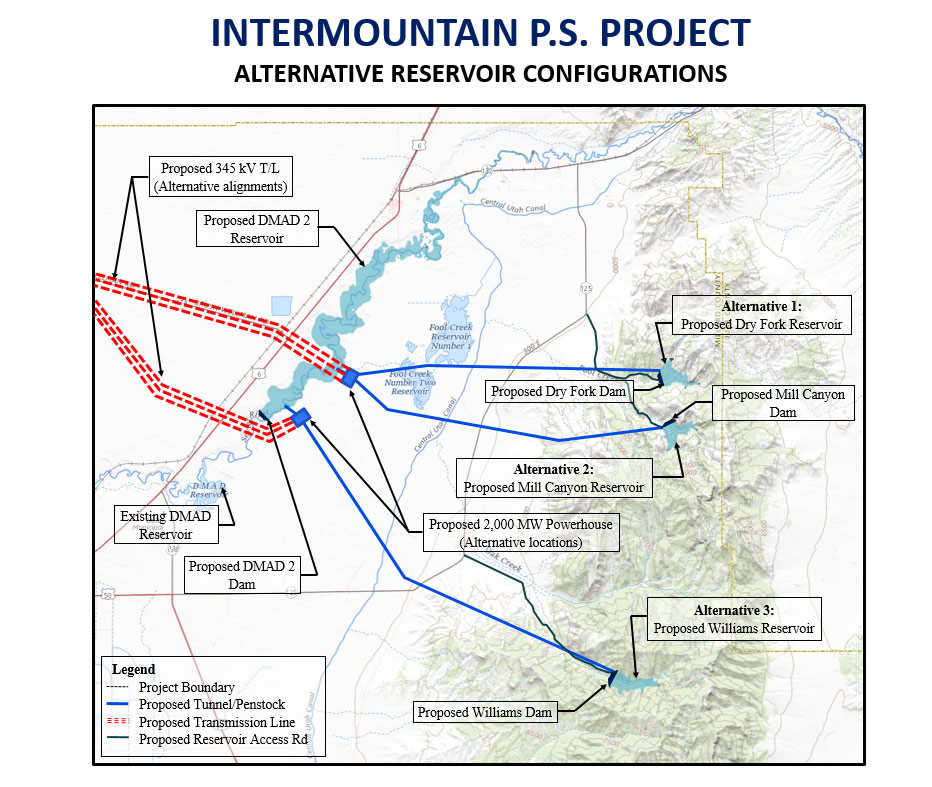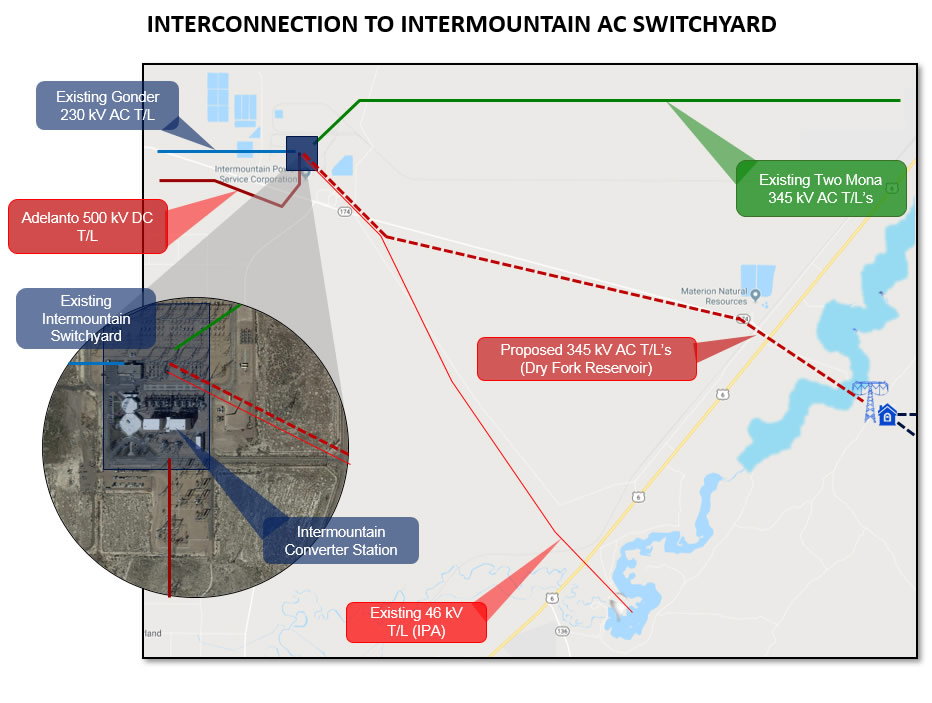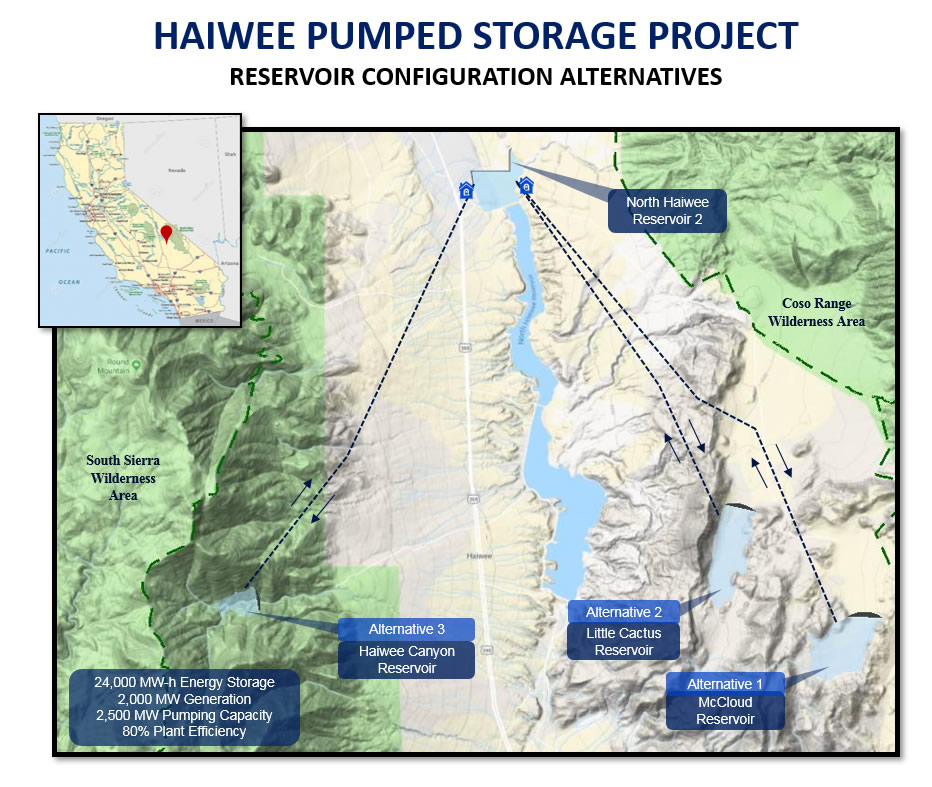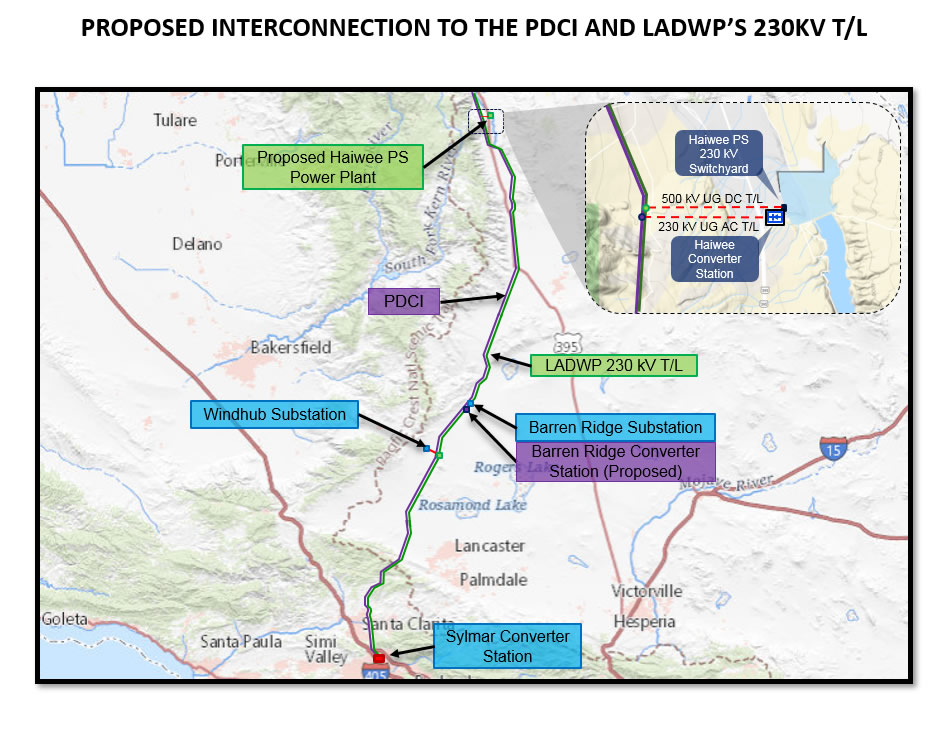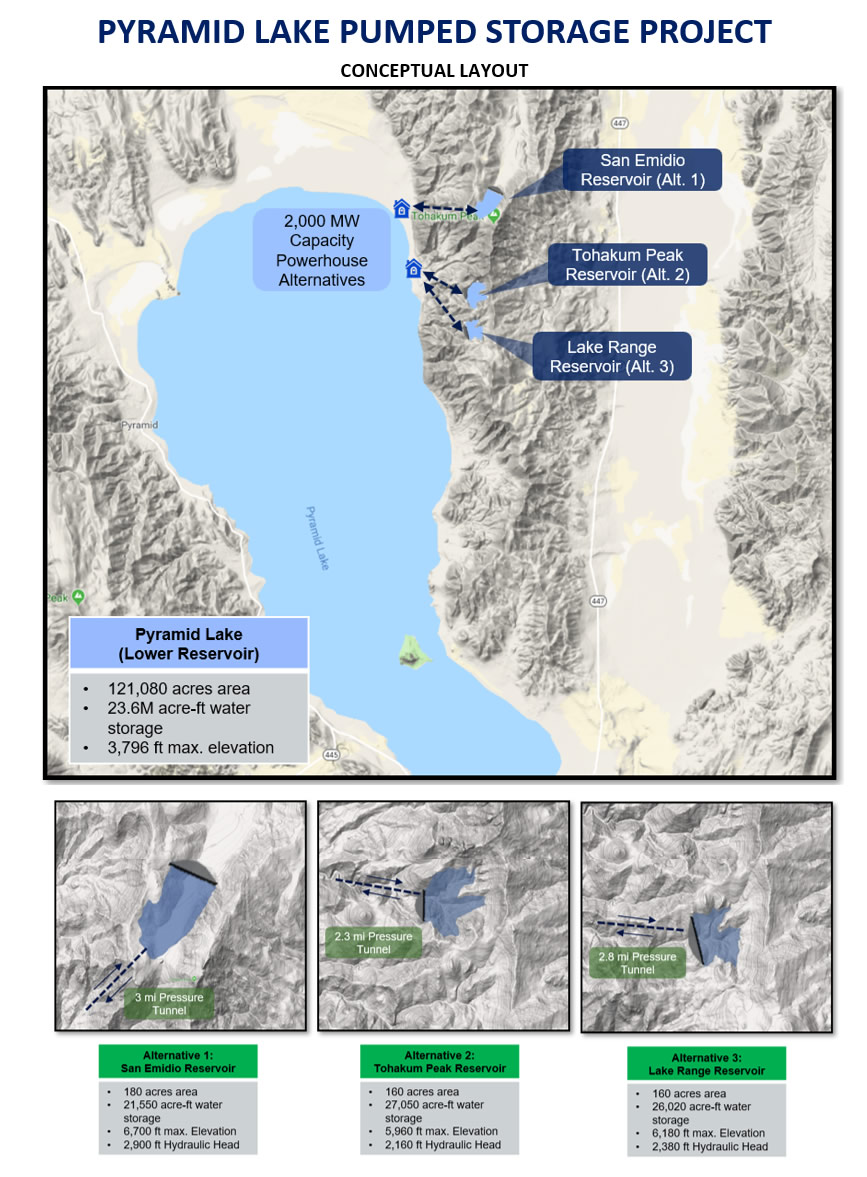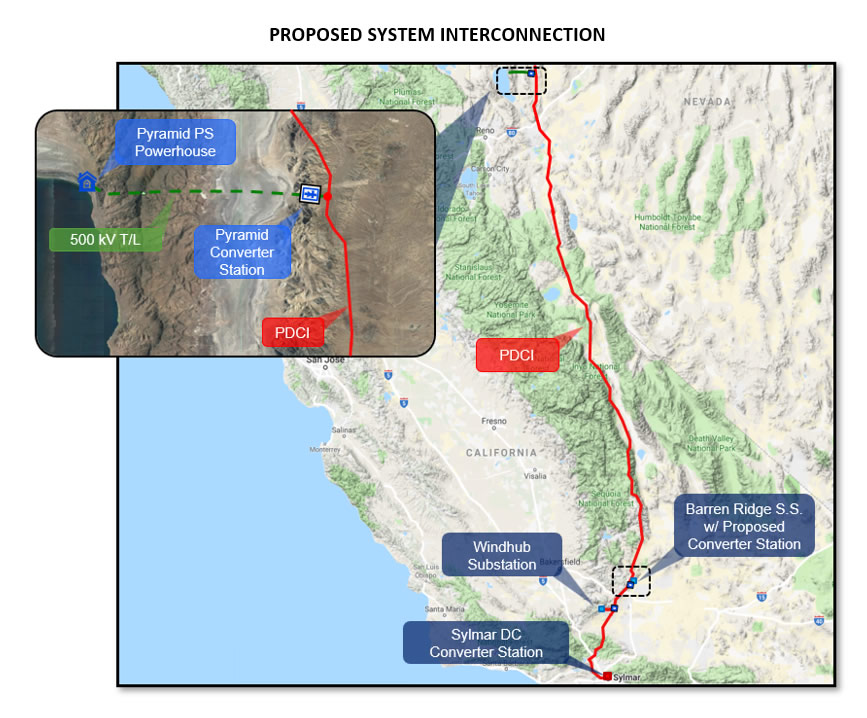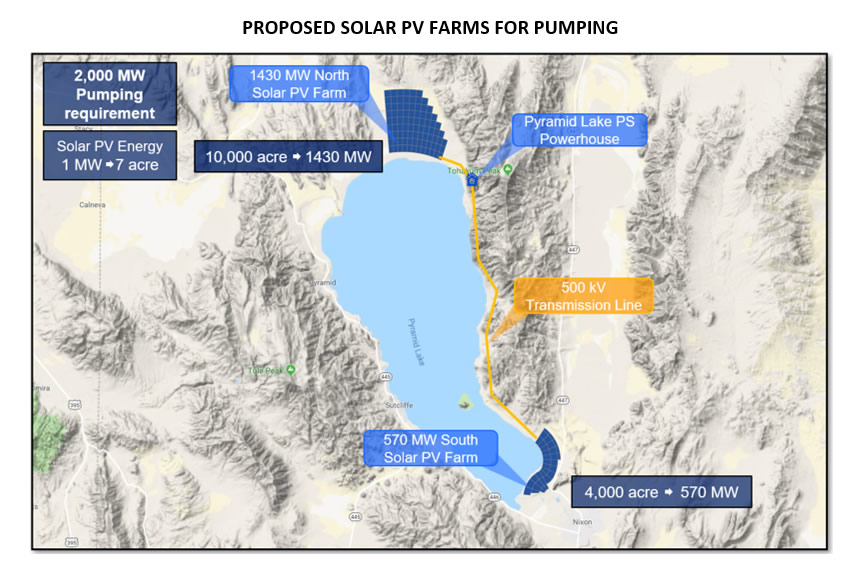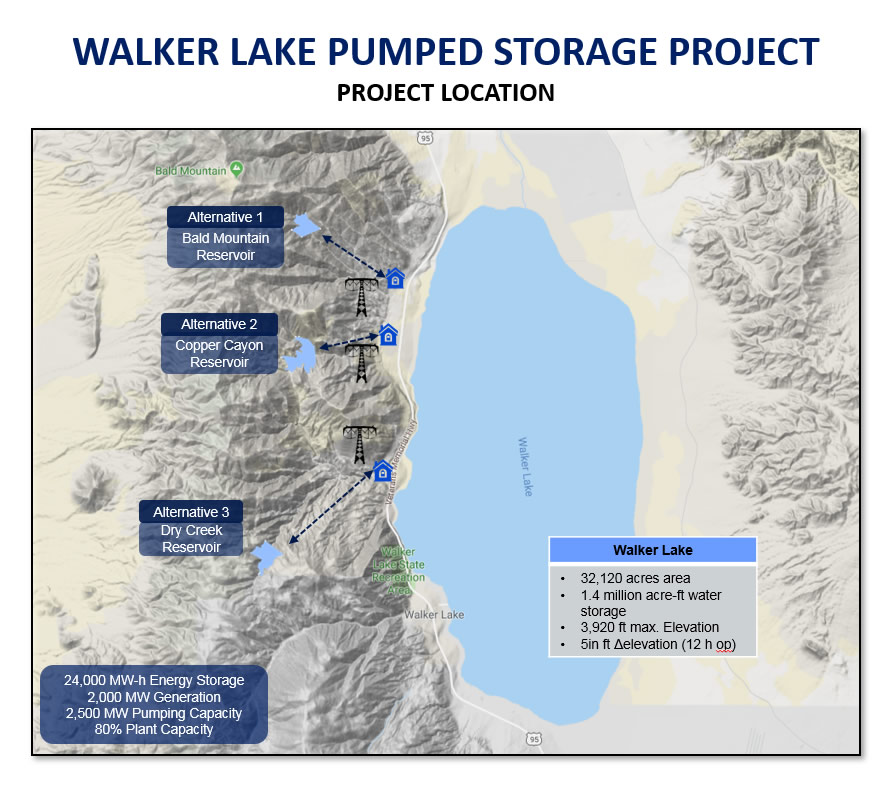INTERMOUNTAIN PUMPED STORAGE PROJECT
ABOUT THE PROJECT
The Intermountain Pumped Storage Project would be located 5 miles northeast of Delta, and 7 miles west of Oak City, Utah in the Millard County. The project concept envisions the construction of a pumped storage power plant facility with capacity ranging from 1,200 MW to 2,000 MW. The project proposes to use a new DMAD 2 reservoir as a lower pool and a new reservoir in the Canyon Mountains Range to serve as the upper pool. The proposed Intermountain Pumped Storage Project would operate in a closed loop.
The new DMAD 2 reservoir would store enough water for project operation and allow for additional water storage to be used for irrigation and water conveyance. Alternatives for an upper reservoir to operate the Intermountain Pumped Storage Power Plant would require the construction of a new embankment to create a new reservoir in the Canyon Mountains east of the new DMAD 2 Reservoir. The new upper reservoir alternatives are listed below:
- Upper Reservoir Alternative 1: A new Dry Fork Reservoir at 6,200 ft el.
- Upper Reservoir Alternative 2: A new Mill Canyon Reservoir at 6,600 ft el.
- Upper Reservoir Alternative 3: A new Williams Reservoir at 7,140 ft el.
The project proposes interconnection with the existing Intermountain AC Switchyard. The Intermountain Pumped Storage Power Plant would interconnect to the Intermountain AC Switchyard using two new 345 kV transmission lines. In order to deliver the generated power to the regional electrical utility network, the following transmission paths will be available:
- Transmission Path 1 (California Path 27) which transmits power to Adelanto, CA through the existing 500 kV DC transmission line.
- Transmission Path 2 (Utah Path 28) which transmits power to Mona through the existing 345 kV transmission lines to the east.
- Transmission Path 3 (Nevada Path 29) which transmits power to Ely, NV through the existing Gonder IPP 230 kV transmission line.
The Intermountain Pumped Storage Project is expected to be most attractive to the Intermountain Power Agency, due to the proposed use of their existing resources in the area. Additionally, other electrical utilities in California and Nevada are expected to be interested in the project as a resource for storing and maximizing renewable energy use.
HAIWEE PUMPED-STORAGE PROJECT
ABOUT THE PROJECT
- Upper Reservoir Alternative 1: A new McCloud Reservoir at 5,260 ft el.
- Upper Reservoir Alternative 2: A new Little Cactus Reservoir at 4,980 ft el.
- Upper Reservoir Alternative 3: A new Haiwee Canyon Reservoir at 6,160 ft el.
- Earthworks and grading to obtain the proposed reservoir floor.
- Realignment of a section of the existing Cactus Flats Road and the existing North Haiwee Road.
- Realignment of the existing LA Aqueduct reaching the existing North Haiwee Reservoir.
- Construction of a diversion structure and connecting channel or pipeline to the proposed North Haiwee Reservoir 2.
PYRAMID LAKE PUMPED STORAGE PROJECT
ABOUT THE PROJECT
The proposed Pyramid Lake Pumped Storage Project would be located 40 miles northeast of Reno, Nevada in the Washoe County. Pyramid Lake is bounded by the Lake Range on the east and the Virginia Mountains on the west. It is the discharge point of the Truckee River, which is the sole outlet of Lake Tahoe.
The Pyramid Lake Pumped Storage Project envisions the construction of a pumped storage power plant facility with capacity of 2,000 MW. The project proposes to use the existing Pyramid Lake as a lower pool and a new reservoir in the Lake Range to serve as the upper pool. A hydraulic head of up to 2,900 ft would exist between the new upper reservoir and the Pyramid Lake, which would be exploited for hydro power generation.
Alternatives for an upper reservoir to operate the Pyramid Lake Pumped Storage Power Plant would require the construction of a new embankment to create a new reservoir in the Lake Range east of the existing reservoir. The new upper reservoir alternatives are listed below:
- Upper Reservoir Alternative 1: A new San Emidio Reservoir at 6,700 ft el.
- Upper Reservoir Alternative 2: A new Tohakum Peak Reservoir at 5,960 ft el.
- Upper Reservoir Alternative 3: A new Lake Range Reservoir at 6,180 ft el.
The proposed Pyramid Lake Pumped Storage Project is expected to have a nominal capacity of 2,000 MW. The interconnection voltage would be 500 kV. The project would interconnect with the existing PDCI and transmit the power to Los Angeles, California. The interconnection of the Pyramid Lake Switchyard to the PDCI will require a new Pyramid converter station. From there, the power would be transmitted to Sylmar Converter Station in the Los Angeles area.
In order to store renewable energy and maximize pumped storage operation, the project proposes a new solar PV farm in the northern or southern shore of the Pyramid Lake. The proposed solar farm would use 14,000 acres of land for the installation of solar panels. The solar farms would generate 2,000 MW of solar PV energy. This energy would be produced and stored during low-demand hours. The Pyramid Lake Pumped Storage Project would then be able to generate 2,000 MW of carbon free electricity when demand is high. Additionally, the project could tentatively interconnect to the existing Windhub Substation for storing wind energy. Other electrical utilities in California and Nevada are also expected to be interested in the project.
BENEFITS
- Provide 2,000 MW of clean energy to California’s electrical grid.
- Help meet California’s goal to reach 100% renewable energy by 2045.
- Reduce CO2 emissions and the use of fossil fuel energy sources.
- Load balancing for intermittent renewable energy sources.
- Environmentally friendly alternative for BESS.
WALKER LAKE PUMPED-STORAGE PROJECT
- Upper Reservoir Alternative 1: A new Bald Mountain Reservoir at 6,500 ft el.
- Upper Reservoir Alternative 2: A new Copper Canyon Reservoir at 5,740 ft el.
- Upper Reservoir Alternative 3: A new Dry Creek Reservoir at 6,560 ft el.

